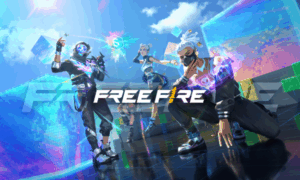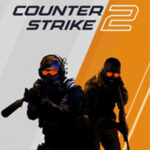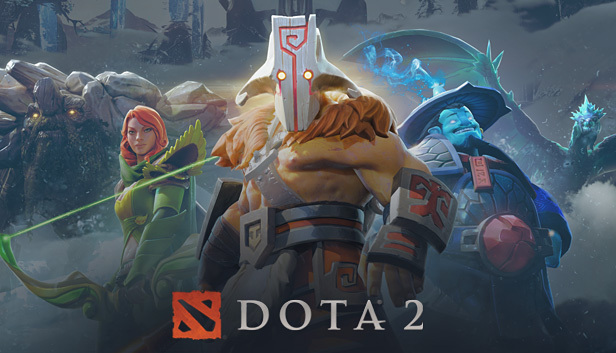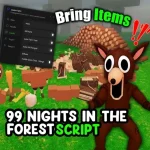Popular Now
Introduction
Free Fire is one of the most popular battle‑royale mobile games, with fast‑paced matches, strategic depth, and a lively global community. In this comprehensive guide, you’ll learn how to improve your gameplay from start to finish—covering everything from settings adjustment, landing zones, and weapon mastery to team play, advanced tactics, and mental preparation. With ten structured sections (with nested headings and lists), each containing focused tips and walkthroughs, you'll have a clear roadmap to take your skills to the next level.

1. Pre-Game Preparation
Before jumping into a match, it’s essential to prepare your tools and mind. A tuned setup and clear goals pave the way for focused improvement. First, optimize your in-game settings: graphics, sensitivity, HUD layout, and controls should be customized to suit your device and style.Customizing Controls & Sensitivity
Experiment with customization of fire buttons, joystick placements, and aim sensitivity. Try “Peak & Fire” mode or smart lay-out depending on your dominant hand. Tweak sensitivity for different scopes (red dot, 2x, 4x, etc.) and camera views until recoil control feels steady.Graphics & Performance
Match graphics settings to your device’s capabilities: balance frame rate and visual clarity. Lower shadows or effects if lag is an issue.2. Choosing a Landing Zone
The choice of landing area can dictate your early‑game trajectory. Pick zones based on your preferred pace: aggressive or strategic. Land in hot zones if you want early combat and loot, or quieter spots to gear up and roam into the safe zone safely.Hot Zone Tactics
High‑loot areas like Bimasakti Strip or Peak often draw many players. You must be ready to fight immediately—grab a weapon quickly and clear peredicts.Quiet Zone Strategy
Choosing lower‑traffic zones gives you time to gather weapons and armor without early conflict. Great for getting warmed up.3. Early Game Loot & Positioning
Once you land, loot fast and efficiently. Focus on finding a weapon (AR, SMG, shotgun), armor, and med‑kits within the first 30 seconds. Use cover, buildings, and natural terrain to stay hidden while looting. Avoid open space and risky windows immediately after landing.Prioritize Key Loot
-
Weapons with high utility (e.g. M4A1, UMP)
-
Level 2 or 3 armor & helmet
-
Med‑kits, energy drinks, and grenades
Awareness & Positioning
Listen for footsteps and gunfire; peek windows carefully. After looting, reposition toward cover or higher ground within the safe radius.4. Mid-Game Movement & Engagements
As the safe zone shrinks, movement becomes pivotal. Use vehicles, zig‑zag transitions, and cover to stay alive and control engagements. Engage only when favorable: if you have cover, aim advantage, or elemental utility like grenades.Smart Rotations
Plan movement through safe cover: rooftop paths, hedges, walls. Stay on edges of zone to minimize exposure.Engagement Rules
Avoid third‑partying fights unless you're confident. Wait for the right moment—after enemies weaken each other is often ideal.
5. Weapon Mastery & Combat Techniques
Mastering weapons is key. Learn recoil patterns, ideal firing mode (single, burst, auto), and switching sensitivity. This knowledge separates newcomers from pros. Practice hip‑fire, ADS, and quick‑scope transitions for various weapons. Spend time in training mode adjusting to each one.Recoil Control
Shoot in short bursts or controlled sprays to maintain accuracy. Tap‑fire for long‑range, spray for mid‑range combat.Close‑Quarters Combat
Shotguns and SMGs shine in tight spaces. Pair them with a secondary AR or pistol for flexibility. Use movement strafing and jump‑shot techniques.6. Use of Utilities & Abilities
Free Fire features utilities like grenades, Gloo Walls, and character abilities—using them effectively can pivot the battle. Learn each character's unique skill and pair it with your playstyle. For example, use Kelly’s Run‑and‑Gun to flank, or DJ Alok’s healing aura for sustained fights.Gloo Walls & Strategic Cover
Deploy Gloo Walls instantly to block damage or create escape paths. Use them when downed to stall for revival or repositioning.Grenade Timings
-
Use frag grenades to displace camping enemies
-
Smoke grenades to conceal revives or retreats
-
Flashbangs to disorient opponents before pushing
7. Final Zone & Clash Tactics
The endgame zone is high‑intensity: it demands precision and composure. Conserve resources but don’t hesitate when opportunity strikes. Maintain high ground, control chokepoints, and use sound cues to detect footsteps. Be patient—don’t peek unnecessarily.High Ground Advantage
Climbing to elevated terrain gives visibility and recoil advantage. Use boxes or walls to perch and control angles.Zone Edge Strategy
Stick to the circle edge—limits attack directions and reduces flanks. Listen to safe‑zone shifts and adjust swiftly.
8. Teamplay & Communication
If you play squads, communication and coordination are vital. Use voice or quick chat to share enemy locations, health status, and plan rotations. Assign roles: who pushes, who plants Gloo Walls, who scouts. Clarity avoids chaos and maximizes cohesion.Callouts & Pings
Precise pings—enemy sighted, loot dropped, zone moving—enable quick decision‑making. Keep communication concise.Revive & Support Tactics
When a teammate is down, use smoke or Gloo Walls to block line‑of‑sight, revive quickly, then reposition together. Don’t leave a single revive attempt unsupported.9. Post‑Match Review & Improvement
After each match, review your performance—whether win or loss. Analyze what went well, what failed, and behavior under pressure. If you lost, focus on mistakes: bad rotations, looting delays, missed shots. If you won, note the key actions that clinched victory.Replay & Stats Analysis
Use in‑game stats or recorded plays to identify error patterns: shot accuracy, time spent looting, damage dealt vs received.Set Improvement Goals
Pick one or two areas to focus on each session—e.g. reduce movement mistakes, improve headshot rate. Track progress week‑by‑week.10. Mindset & Long‑Term Growth
Winning consistently requires not just skill, but the right mindset. Stay patient, humble, and resilient. Losses are lessons; practice patience and positivity. Take breaks when needed to avoid burnout. Celebrate small victories—highest kill match, improved accuracy, clutch wins.Growth Mindset Attributes
-
Embrace feedback and critique
-
Stay persistent after setbacks
-
Seek challenges to stretch your abilities
Routine & Balance
Create a healthy schedule: training sessions, matches, rest, school/work balance, physical exercise. A balanced life fuels in-game performance.


















